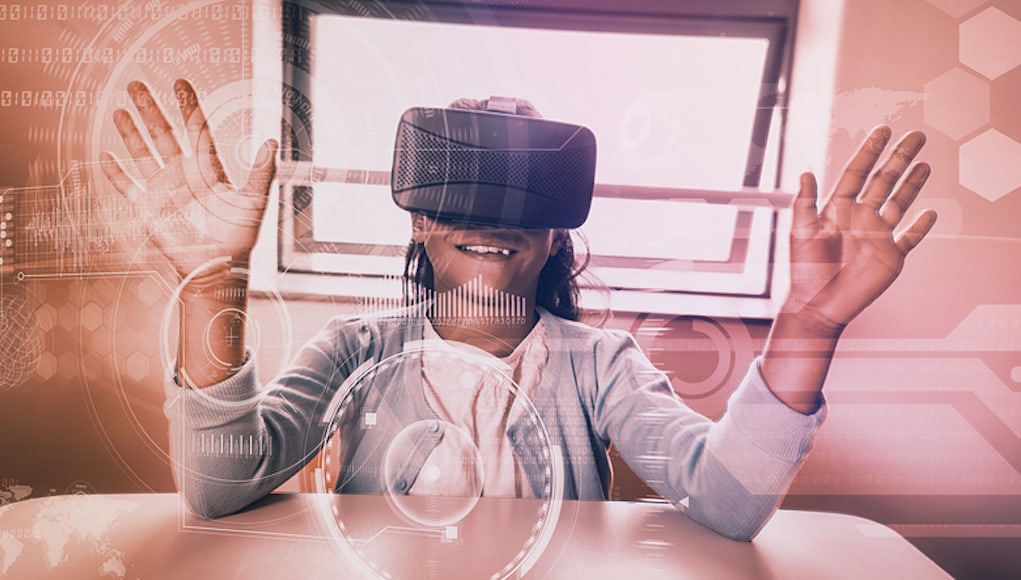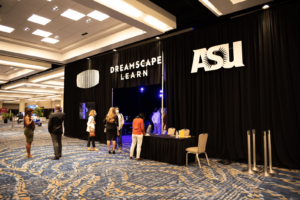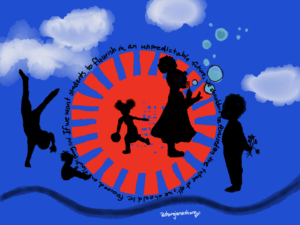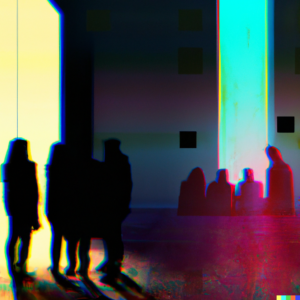The Future of VR & AR in Education

By: Helen Vlasova
Did you know that there are 7 different learning styles: verbal, visual, musical/auditory, physical/kinesthetic, logical/mathematical, social, solitary, and a combination of a few of these; and moreover, each student, as a unique individual, finds different types of these learning styles most useful to them?
Considering that as educators, teachers already have many different roles to fulfill, like controllers, organizers, creators, prompters, and assessors, on top of the fact that the number of schools that are experiencing overcrowding continues to increase, it is more than obvious that teachers are in desperate need of tools that will help them not only ease the process of learning, but also modernize it, bring it closer to the student’s interests, and adjust it in a way that students with different learning styles will find the lesson equally useful and beneficial.
Implementing technology such as VR—virtual reality—and AR—augmented reality—into classrooms allows educators to achieve this goal. That’s why many educators predict a bright future for VR and AR in education.
VR & AR are Becoming the Future of Education
Educators prefer using VR in their classrooms
Statistics from a National Survey are showing that 90% of educators agree that VR technology is quite an effective way of providing differentiated and personalized learning experiences for students. One of the main struggles teachers face is capturing and maintaining students’ attention, and VR and AR are not only enabling teachers to capture kid’s attention, but also to teach in a more exciting, productive way that at the same time eases the explanation process and is more fun for the kids.
Education sector becomes a great investor in VR technology
In classrooms that have implemented VR and AR as part of their education, there is increased interest. We already mentioned why teachers like using it, but studies also confirm that students—97% of them—actually voted that they would attend a class/course with VR. Considering the current situation with COVID-19 where kids need to learn from home, as well as the inevitable need of reforming the school system, many see AI, AR, and VR as the future of education.
Education is expected to be the 4th largest sector that will invest in VR investment. Many studies including this one done by Statista are predicting that by 2025, VR in education is to be a $700 million industry.
VR & AR are Changing the Educational System
Help students focus
The number of students experiencing difficulties concentrating and staying focused while learning is constantly rising. At universities, college student’s mental health statistics show that students face difficulties focusing and are facing other mental health issues like depression and anxiety. Even at a much younger age, statistics show students experiencing difficulties staying focused, with the Center for Disease Control and Prevention reporting that the diagnoses of ADHD among K-12 schoolers are continuing to rise with over 5.7 million children currently being diagnosed. Moreover, children born in the age of digital technology are continuously exposed to stimulations from technology devices and the internet which contributes to the rapid decrease of their attention span.
VR and AR technology during classes help students concentrate on literally what is in front of their eyes, and in a way, they are being ‘forced’ to interact with their studies and exclude any potential side stimuli. The VR and AR technology are making the lectures, books, and exercises more immersive, interactive, riveting, and engaging, and with that, they are becoming a feasible solution for seizing students’ focus and attention.
Eliminate language barriers
With multicultural societies, especially at higher education levels, language differences can be a significant challenge as students may not be able to understand the material and have difficulties with assignments and this could ultimately influence their performance.
Language translation is one of the features that could easily be built into the software of VR. This will allow the VR classroom realizations to potentially be experienced in any language which will eliminate the language barriers and all the difficulties that may come from learning in a foreign language.
Ease and improve the learning process
While on average, a regular student can remember 30% of what they hear and 20% of what they see; in traditional classrooms where teachers are using only images and auditory materials students oftentimes can understand only so much from pictures and explanations when it comes to complex concepts, theories, and subjects.
This is because albeit they may see the thing being explained on an image, they still have to visualize it and create a perception of it in their own minds. With VR and AR, they can easily explore different realities and angles of the thing they are learning; instead of hearing, reading, and just seeing a two-dimensional picture, they get to learn that material through experience. Statistics confirm that students remember 90% of the material if it is learned through experience. This confirms further that VR and AR are improving the learning process.
Contribute to inclusivity
VR and AR can also contribute to creating a more inclusive classroom, as VR and AR can be beneficial for students who have various disabilities. Some models of VR and AR are specifically designed for different types of disabilities and are enabling students to simply regulate their devices and blend in the classes, and not be left out:
- VR Augmented Aid—offers different applications like the ability to manipulate contrasts, alter text sizes, or add audio commentary which can help students who have visual impairments regulate their VR according to their specific needs and still be part of the class.
- SignAloud gloves—in combination with VR are allowing students to communicate in sign language and translate it into a human speech.
Focus on exploration and practice
With AR especially, students become more interactive as they start focusing on practice and not just theory. If traditional classrooms focus on theories, with VR and AR the focus shifts to learning through practice rather than theory. This further increases the students’ interests; by using this technology students get to experience and not only hear the material, which makes them more curious and interested in the subject.
Moreover, without the pressure and competitiveness that classrooms often can bring, students feel more encouraged and empowered to learn and practice with these devices, through simply exploring at their own pace.
For more, see:
- 15 AR and VR Immersive Learning Tools
- Exploring the Future of Education through EdTech, Neuroscience and Literacy
- Education Technology is a Global Opportunity

Helen Vlasova is the Managing Editor at the educational information website admissionsly.com.
Stay in-the-know with innovations in learning by signing up for the weekly Smart Update.







Apurva Desai
AR VR will become more affordable as new head-up displays and apps become available that enable large-scale immersion at a lower cost. Immersive technology has the potential to be the most visible educational breakthrough.
Kathryn Cusano
AR learning is fantastic, thanks for this article! There are some really good AR resources that I know of on www.twinkl.com if anyone is looking for free activities :) If you're interested, I really liked this anatomical model and this one of the Earth's core:
https://www.twinkl.com/resource/t-ar-3-human-heart-quick-look
https://www.twinkl.com/resource/t-ar-6-structure-of-the-earth-quick-look-no-file
Uche Edu
Thank you for sharing this information with us for which i was looking for long time
Amy Saunders
Wow, this is such an enlightening article! I totally appreciate your explanation on how virtual reality could make any classroom session even more convenient for students and teachers alike through engaging visuals. My son is a college student who's been asked by his lecturer to make a presentation on digital reality theory next week. I'll make sure he refers to the right expert to help him resolve the matter later. https://digitalrealitytheory.com/